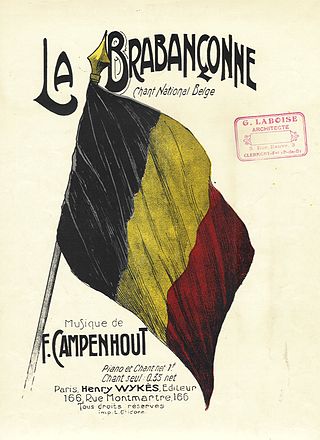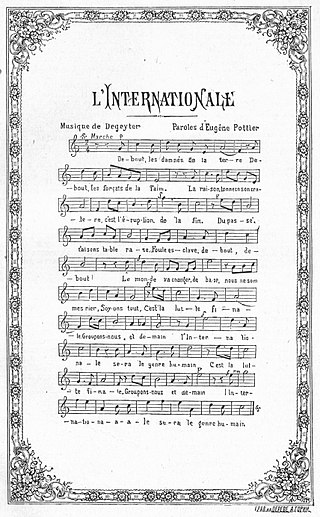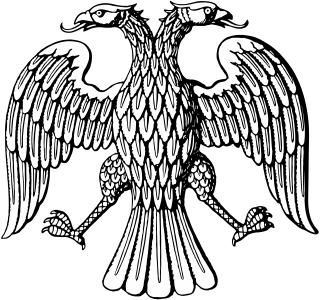By country
Music was part of the cultural support of the earliest revolutions, and institutionalized as a genre of socialist or workers' music in countries including the Soviet Union, its former Eastern European satellites, China, Vietnam, Cuba and North Korea, as well as less permanent revolutionary movements in other countries.
French Revolution
During the French Revolution notable songs, beyond "La Marseillaise", included " Chant du départ ", "Carmagnole", " Ça Ira " (1790), "Allons Français au Champs de Mars" (1790), "L'aristocratie en déroute" (1790), "Aux bons citoyens" (1790), "Le bonnet de la liberté", and many more.
American Revolution
Songs during the American Revolutionary War with revolutionary lyrics and propaganda purposes include songs such as "Dying Redcoat", "Free America", "Poor Old Tory", and "Jefferson and Liberty".
Greek Revolution
The successful Greek War of Independence between 1821 and 1832, generated not only revolutionary songs in Greece, but wide artistic and musical support from other western nations.
Revolutions of 1848
The Revolutions of 1848 in Europe generated a wide range of revolutionary, nationalist and patriotic popular song. This tapped into earlier support for the Napoleonic revolutions. [1] [2] [3] The current Romanian national anthem " Deșteaptă-te, române! " is a revolutionary song of 1848. [4]
Russian Revolution
Revolutionary songs were used by the Bolsheviks during the Russian Revolution, with "The Internationale" becoming the national anthem of the USSR later on.
Spanish Civil War
Many revolutionary songs appeared during the Spanish Civil War and subsequent social revolution, especially amongst members of the anarcho-syndicalist trade union, the Confederación Nacional del Trabajo . The most famous of these, " A las Barricadas ", remains popular for anarchist militants to this day.
Europe
In post-World War II Europe, revolutionary songs were taught in schools and sung at celebrations and official functions. [5]
China
Revolutionary songs were a prominent part of the popular culture of the People's Republic of China during the 1950s, 1960s, and 1970s, and especially during the Cultural Revolution. One of the more popular Chinese revolutionary songs was "Nanniwan", a 1943 song lauding the exploits of the Eighth Route Army in the titular gorge in Shaanxi province near the revolutionary base of Yan'an. Revolutionary songs of Communist China often served to glorify the 1949 revolution and to present an image of unity amongst China's 56 ethnic groups and its various regions. Songs such as "The Sky Above the Liberated Zone" (praising the Communist Party of China (CCP) and romanticizing life in the CCP-held liberated zones during the wars against Japan and the Kuomintang) and "Osmanthus Flowers Blooming Everywhere in August", a Red Army folk song from the Sichuan province, are among the best-known revolutionary songs from the wartime and Maoist periods in China.
North Korea
Vietnam
Nhạc đỏ, "Red Music," is the common name of the revolutionary music (nhạc cách mạng) genre in Vietnam. [6] Composers during the struggle against the French include Đinh Nhu [7] then songwriters of Vietnamese popular music such as Văn Cao.
Cuba and Latin America
Cuba's national anthem " La Bayamesa " ("El Himno de Bayamo") dates to 1868, but many new songs were generated by the revolution. The key focus is on the rural people. [8] " Hasta Siempre " (1965) was written when Che Guevara departed Cuba to spread the revolution in Africa. Another well known Latin American song, " El pueblo unido jamás será vencido " (1973), is not a revolutionary song, but a Chilean protest song in support of Salvador Allende. Cuban government sponsored revolutionary Nueva trova is often similar to Nueva canción , Latin American protest songs.
Iranian Revolution
Following the Iranian Revolution musicians were obliged to create music different from the pre-revolutionary music both in terms of rhythm and content. [9] Iranian revolutionary songs (Persian : سرودهای انقلاب اسلامی) are epic ballads, composed during the Islamic Revolution in Iran in support of the revolution and in opposition to the Pahlavi dynasty. Before the success of the revolution, these chants were made by various political supporters - many of them recorded on cassette tapes in underground and home studios. On the anniversary of the revolution, many of the songs were broadcast by Iranian state television. In schools the songs have been sung by students as part of the celebrations Fajr for decades.














